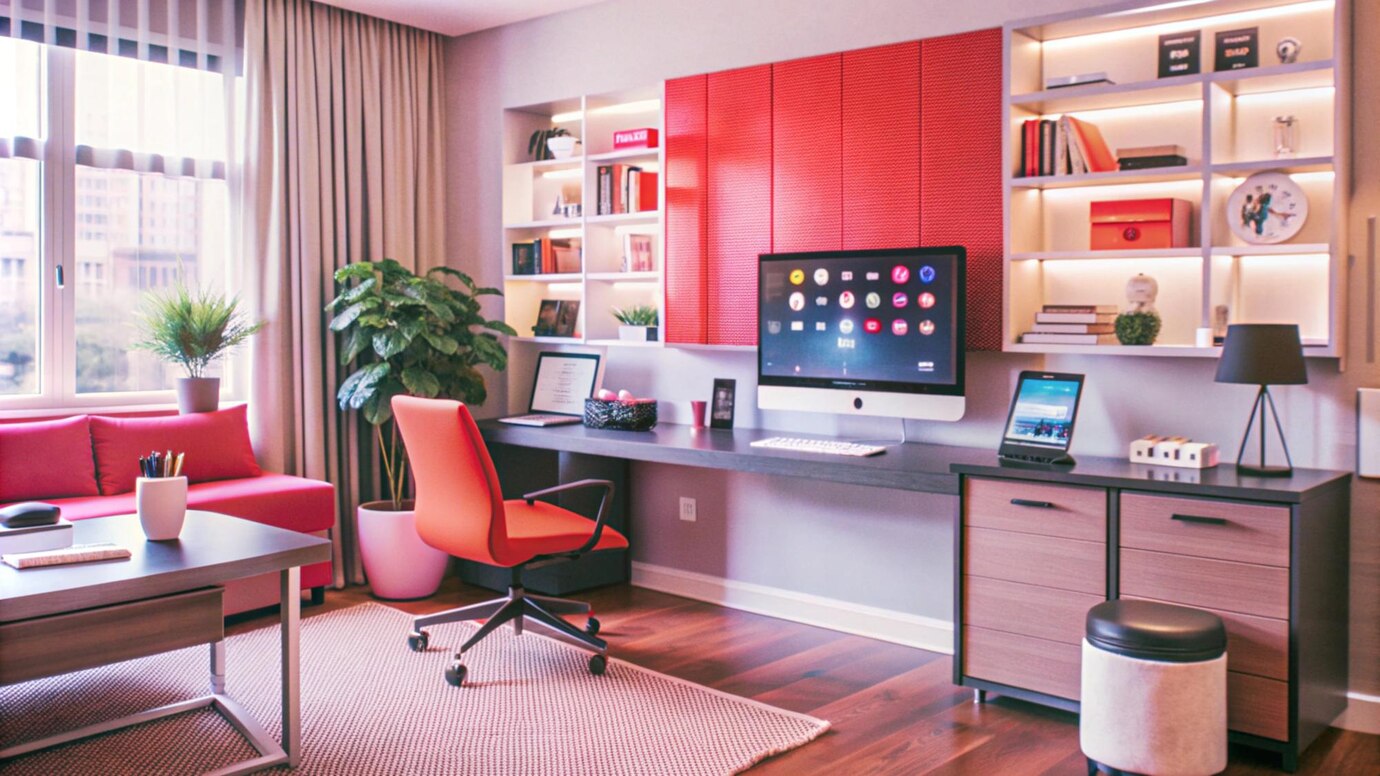Streamline your space, sync your devices, and take control of your digital life.
In today’s connected world, your home is more than just a place to relax—it’s your office, entertainment hub, smart home nerve center, and maybe even your fitness studio. With devices, apps, and services running across every room, managing it all can get overwhelming fast.
That’s where a digital command center comes in.
Think of it as your personal tech control room—a centralized setup that brings clarity, control, and efficiency to your digital life. Whether you’re managing your smart home, juggling remote work, or just trying to keep tabs on your day, a digital command center gives you a clear view of everything that matters.
Here’s how to build one that fits your space, your devices, and your lifestyle.
What Is a Digital Command Center?
A digital command center is a centralized space (physical or virtual) where you control and monitor your tech—from calendars and reminders to smart devices, media, and task management.
It can be as simple as a wall-mounted tablet or as robust as a multi-screen setup with smart displays, voice assistants, and automation dashboards.
At its core, it’s about bringing everything together in one accessible place.
Step 1: Define Your Command Center’s Purpose
Start by asking: What do you want this space to do?
Here are a few use cases:
-
Smart home control: Manage lights, thermostats, cameras, and more
-
Family hub: Share calendars, grocery lists, reminders, and messages
-
Productivity zone: Sync your schedule, tasks, and daily workflow
-
Media control: Centralize your music, streaming, and speakers
-
Work-from-home station: Track meetings, to-dos, and important alerts
You can combine purposes or focus on one. Your command center should reflect how you use tech every day.
Step 2: Choose Your Control Devices
Depending on your needs, you might use:
Tablets or Smart Displays
-
Use a wall-mounted or docked tablet with widgets or dashboards (like iPad or Android with apps like Home Assistant, Hubitat, or Google Home).
-
Smart displays (like the Amazon Echo Show or Google Nest Hub) offer built-in voice control and visuals.
Voice Assistants
-
Place smart speakers (Alexa, Google Assistant, or Siri) nearby to issue commands or ask for updates hands-free.
Laptops or Desktops
-
For a more robust setup, use a dedicated monitor or workspace to run dashboards (e.g., Notion, Trello, or a custom browser-based home panel).
Bonus: Many people combine all three for layered control.
Step 3: Set Up a Digital Dashboard
The heart of your command center is your dashboard—the interface that pulls everything together.
Apps and platforms to consider:
-
Notion or Trello – for personal task and project management
-
Home Assistant or SmartThings – for automating and monitoring smart home tech
-
Google Calendar, Apple Calendar, or Outlook – for scheduling
-
Todoist or Microsoft To Do – for tasks and reminders
-
Spotify, YouTube Music, or Sonos – for controlling music playback
-
Google Keep or Evernote – for shared notes and grocery lists
You can either integrate these into one app, or organize them on a single screen via tabs or widgets.
Step 4: Mount or Position Your Setup Strategically
Choose a central, easily accessible spot in your home—like the kitchen, hallway, or home office. Wall-mounting a tablet or setting it up on a stand near the entrance can keep it in reach for the whole household.
Tips:
-
Use cable organizers to keep things neat
-
Position it at eye level for quick glances
-
If it’s a shared hub, make sure everyone knows how to use it
Step 5: Automate Your Daily Routine
With everything in one place, you can start automating common tasks to make your home even smarter.
Examples:
-
Morning routine: Turn on lights, read the weather, and display your calendar
-
Evening mode: Dim lights, lock doors, and play relaxing music
-
Meal prep: Pull up recipes, control kitchen appliances, and update shopping lists
-
Away mode: Monitor cameras, turn off devices, and activate security systems
You can trigger these routines with voice, touch, or motion sensors—whatever suits your setup.
Personalize It
Make it yours. A command center should be functional, but also reflect your personality and needs.
Ideas:
-
Display family photos, custom wallpapers, or motivational quotes
-
Add widgets for news, weather, or daily affirmations
-
Use color themes to match your room’s aesthetic
The more enjoyable and intuitive it is, the more you’ll use it.
Take Control of Your Connected Life
A digital command center isn’t just a convenience—it’s a way to stay focused, organized, and in charge of your digital environment. In a world full of scattered apps, screens, and smart devices, bringing everything together just makes sense.
Set it up once, and it’ll work for you every day.

